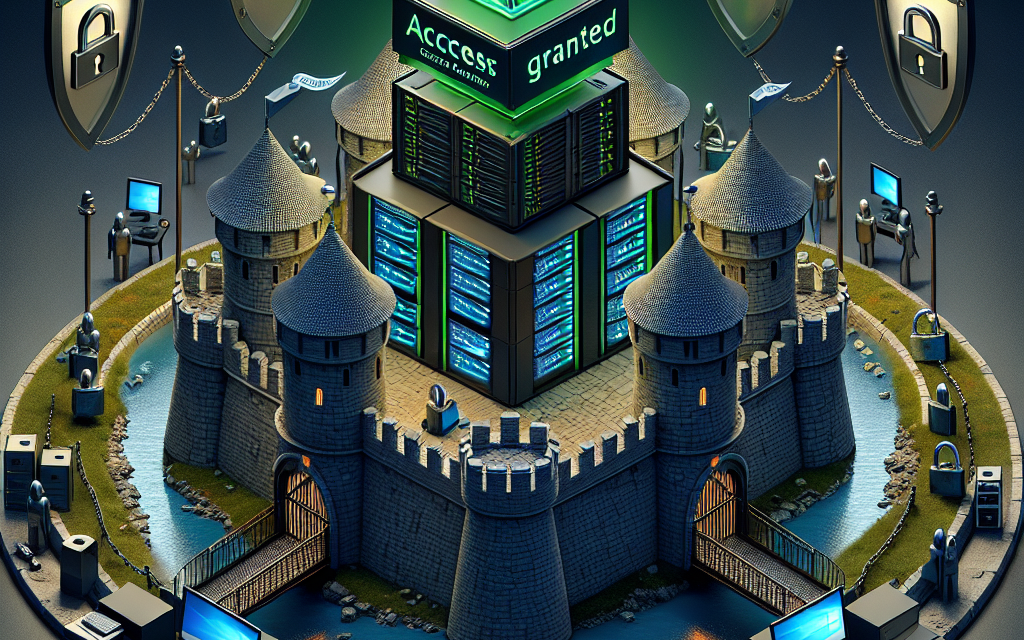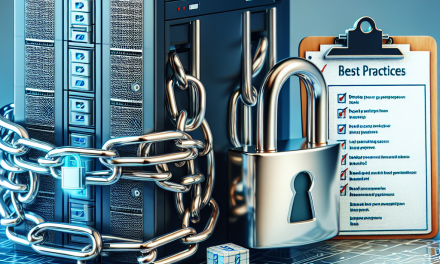In today’s rapidly evolving digital landscape, organizations are increasingly reliant on remote access solutions, particularly for managing servers and delivering services. The Remote Desktop Protocol (RDP) provides seamless access to Windows servers, making it a powerful tool for IT administrators and remote workers alike. However, with the convenience of RDP comes a host of security vulnerabilities that can expose your organization to significant risks. In this article, we will discuss actionable strategies to strengthen RDP security in your Windows Server environment.
Understanding RDP Security Risks
Remote Desktop Protocol has long been a target for cybercriminals. Some of the most common risks associated with RDP include:
- Brute Force Attacks: Attackers use automated tools to guess usernames and passwords, gaining unauthorized access to the server.
- RDP Vulnerability Exploits: Unpatched vulnerabilities in the RDP service can be exploited by attackers to take control of your server or execute malicious code.
- Session Hijacking: This occurs when an unauthorized individual takes control of an active RDP session.
- Data Interception: Without proper encryption, sensitive data exchanged during RDP sessions can be intercepted by malicious actors.
Given the severity of these threats, it’s imperative to adopt a robust approach to RDP security on your Windows Server.
Key Strategies for Strengthening RDP Security
1. Implement Strong Password Policies
Enforce strict password policies for all accounts with RDP access. This includes:
- Complex Passwords: Require passwords to be a minimum of 12-16 characters, incorporating upper and lower case letters, numbers, and special characters.
- Regular Password Changes: Encourage users to change their passwords regularly.
2. Use Network Level Authentication (NLA)
NLA requires users to authenticate before establishing a session with the server, providing an additional layer of security. To enable NLA:
- Open System Properties on the server.
- Navigate to the “Remote” tab.
- Check the box for “Allow connections only from computers running Remote Desktop with Network Level Authentication.”
3. Limit User Access
Restrict RDP access to only those who require it for their job functions. Use the following strategies:
- Create User Groups: Define user groups with different access levels based on roles and responsibilities.
- Remove Unused Accounts: Regularly audit user accounts and remove any that are no longer needed.
4. Enable Two-Factor Authentication (2FA)
Adding a second layer of authentication significantly strengthens RDP security. Implement 2FA solutions that require users to verify their identity through a second device, such as a smartphone, during the login process.
5. Update and Patch Regularly
Ensure your Windows Server and RDP are running the latest updates and security patches. Microsoft regularly releases updates that fix vulnerabilities and enhance security. Configure automatic updates wherever possible.
6. Configure Firewalls and Network Security
Limit RDP access by configuring your firewall:
- Restrict IP Addresses: Allow RDP connections only from trusted IP addresses or ranges.
- Change the Default RDP Port: By default, RDP operates on port 3389. Consider changing it to a non-standard port to reduce exposure to automated attacks.
7. Utilize VPN for Remote Access
A Virtual Private Network (VPN) provides a secure tunnel for remote connections, encrypting data and hiding your server’s IP address. Ensure employees connect to the VPN before accessing RDP.
8. Monitor Remote Access
Regularly monitor RDP access logs and use Security Information and Event Management (SIEM) tools to detect anomalous behavior and potential breaches in real time.
9. Consider Using Remote Desktop Gateway
A Remote Desktop Gateway (RD Gateway) allows users to connect securely over the internet. It encapsulates RDP traffic within an HTTPS tunnel, providing an additional layer of security for remote sessions.
10. Educate Your Users
Conduct regular security training sessions for employees to raise awareness about the risks associated with RDP and the importance of following security protocols. Make sure they understand how to recognize suspicious activities or phishing attempts aimed at compromising their credentials.
Conclusion
While RDP remains an essential tool for remote administration of Windows servers, its widespread use does not come without risks. By implementing the strategies outlined in this article, you can significantly enhance the security of your Remote Desktop Protocol environment. Regularly review and update these security measures to ensure continued protection against evolving threats. Remember, in the world of cybersecurity, vigilance and proactive measures are key to safeguarding your organization’s critical assets.
For more insights and best practices on optimizing your IT environment, stay tuned to WafaTech Blogs!





